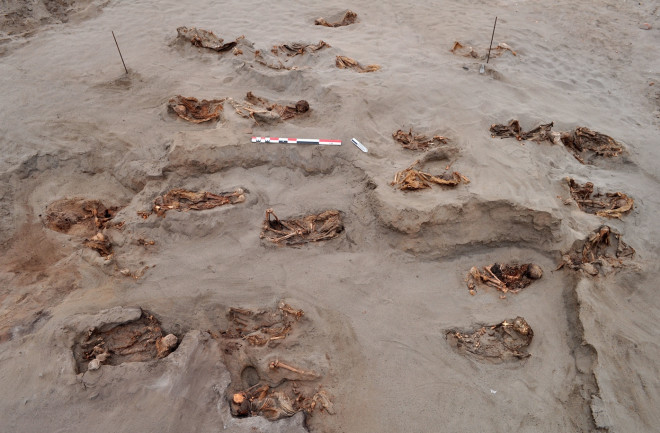The question haunts a seaside burial in northern Peru, where hundreds of remains from the largest-known mass child sacrifice in the Americas were found. The site, known as Huanchaquito-Las Llamas, dates back some 550 years to when the region was part of the Chimú Empire, which flourished between the 11th and 15th centuries.
The burial was hidden from sight until 2011, when locals discovered bones poking out of eroding sand. By the time excavations concluded in 2016, archaeologists had unearthed 137 children between the ages of 5 and 14, three adults and 200 animals believed to be young llamas — all sacrificed at about the same time.
Many children’s remains were found with broken ribs and other injuries. Consistent cuts across the chests suggest an experienced hand made them, possibly to remove the hearts while the children were still alive. Cut marks on the llama bodies suggest their hearts were taken, too.
Like some other pre-Columbian cultures, the Chimú practiced human and animal sacrifice. But this macabre find still caught archaeologists by surprise.
“I’ve been digging for 35 years on the north coast of Peru … We had no knowledge that the Chimú sacrificed children,” says John Verano, co-leader of the excavations and a biological anthropologist at Tulane University. “We also had no idea that they sacrificed people this way, by cutting the chest open.”
Read more: Unearthing Secrets of Human Sacrifice
Clues to what might have led to the sacrifice lie in the soil itself. A layer of mud at the site suggests the event happened after heavy rainfall. Desperate leaders may have hoped a large-scale killing would put a stop to devastating weather.
Since wrapping up excavations at Huanchaquito-Las Llamas, the team has uncovered additional burials of sacrificed Chimú children. Verano says they’ve dug up hundreds more remains so far, and it’s likely that more lie beneath the sand.
“Every place we put a shovel in, we find a child sacrifice,” Verano says.

